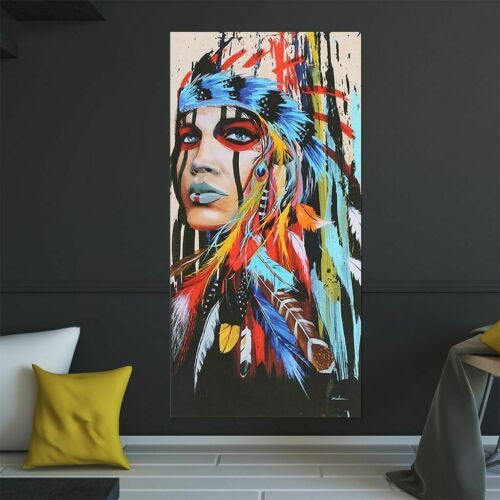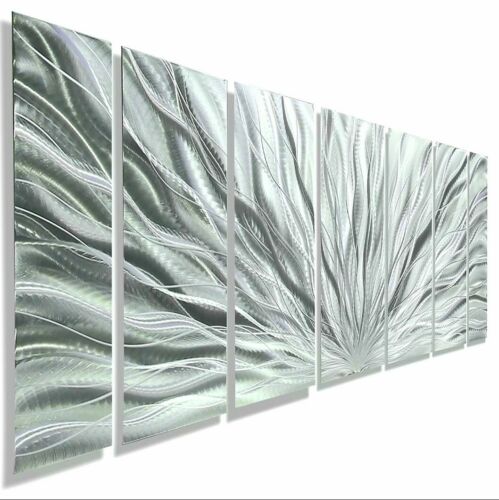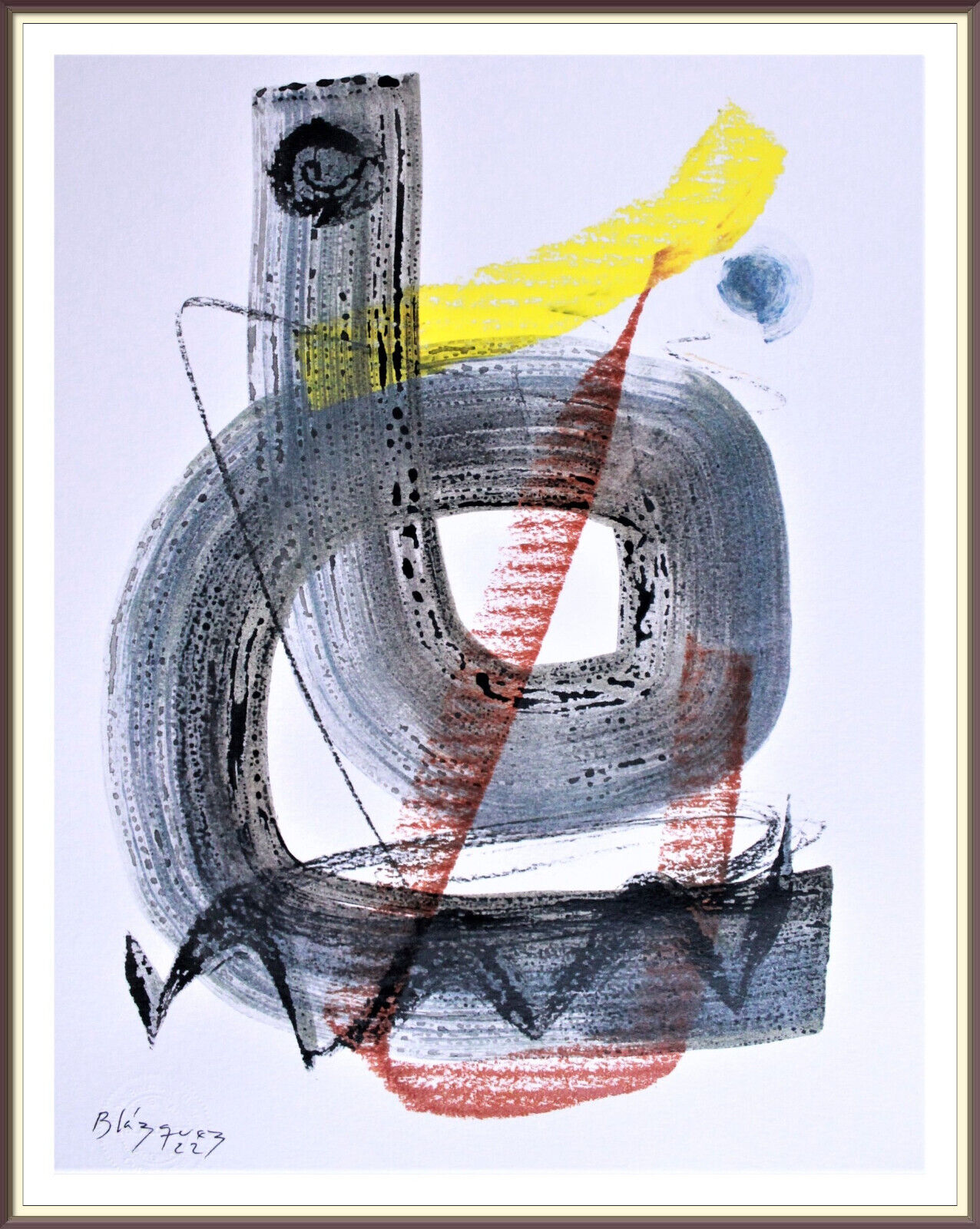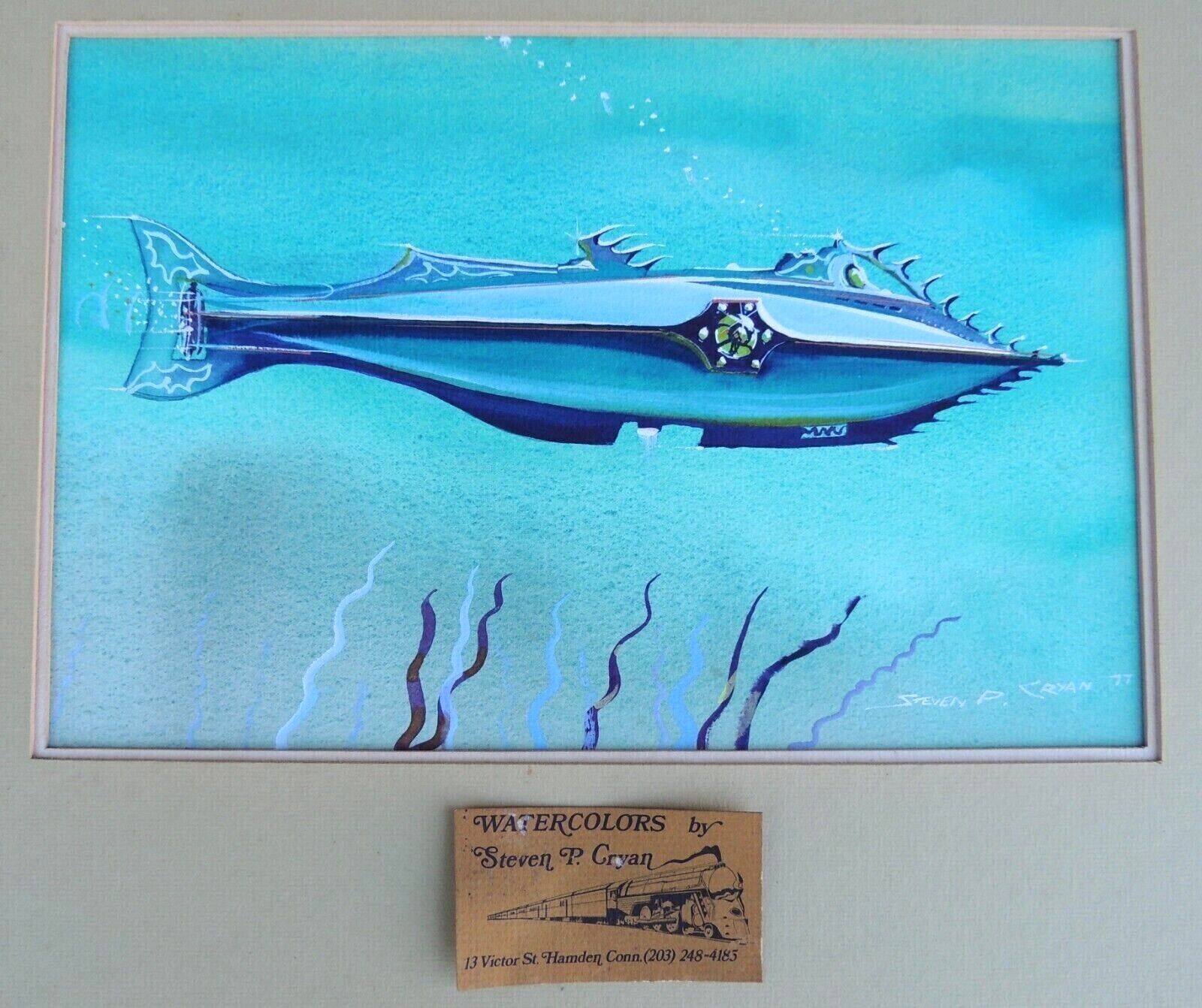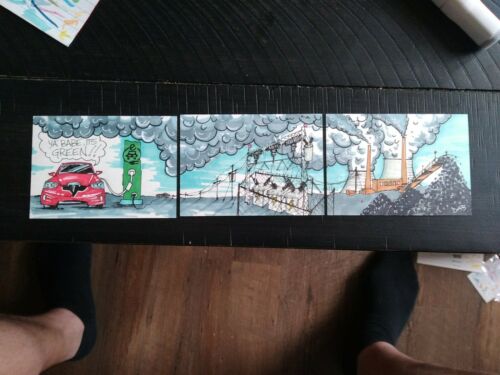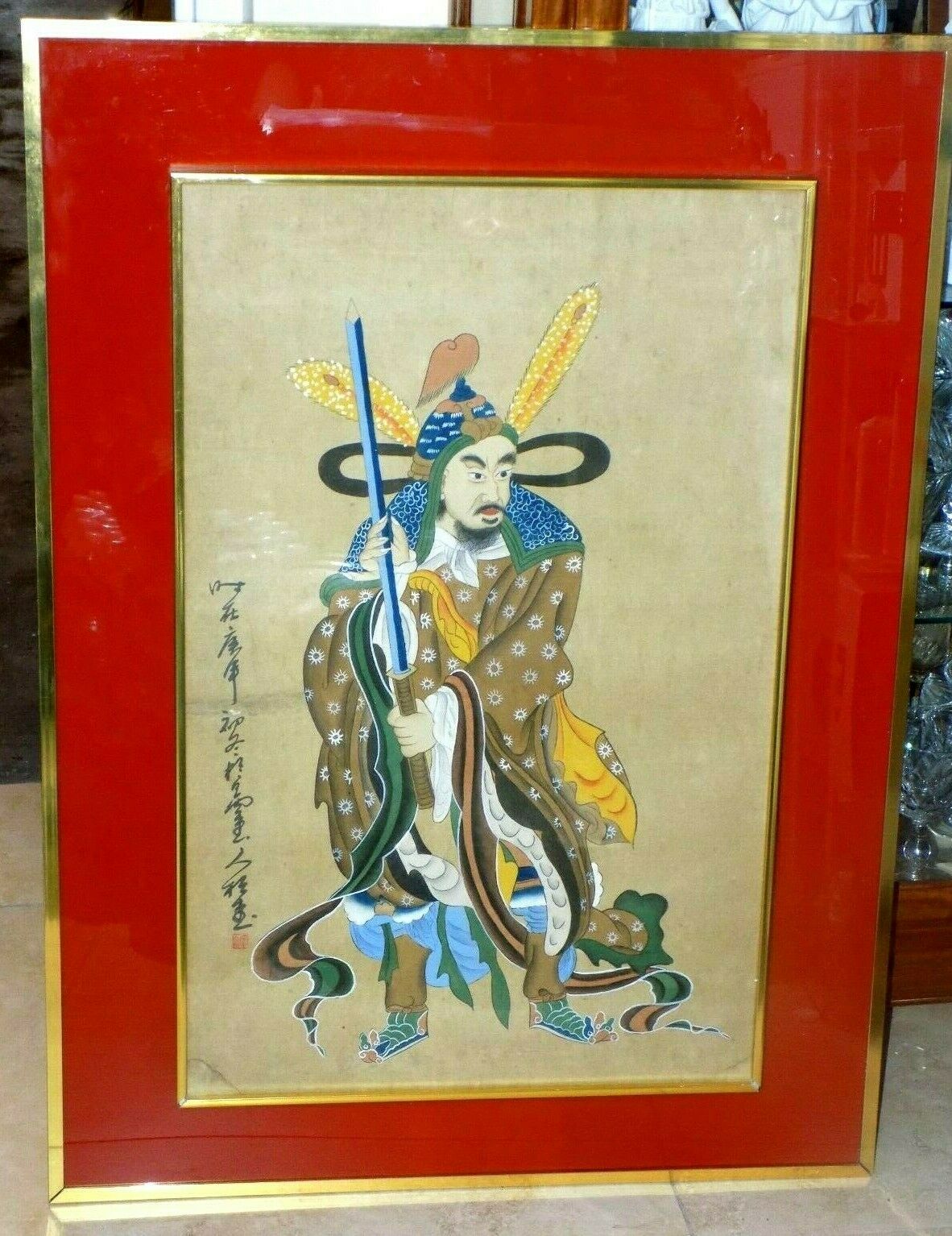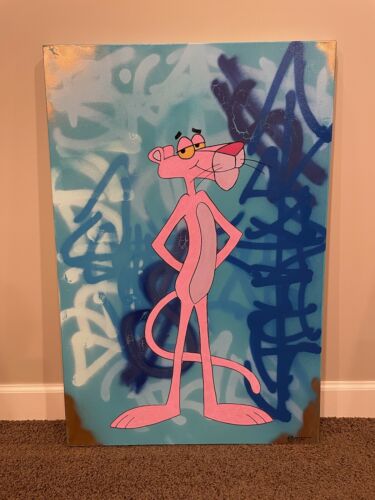-40%
MIDCENTURY ABSTRACT modernist OIL PAINTING-1954 Julian Edwin LevI 17" X 11" MCM
$ 683.75
- Description
- Size Guide
Description
LISTED ARTIST JULIAN EDWIN LEVI : 1900-1982A GREAT ABSTRACT MODERNIST PAINTING , IT MEASURES APPROX. 17"W X 11"H (21"x 15" including the frame) SIGNED AND DATED 1954.
RETAINS ORIGINAL LABEL FROM NY GALLERY.
THIS IS A RARE MIDCENTURY PAINTING BY A WELL LISTED ARTIST WHO'S WORKS HAVE STARTED TO GO UP AT AUCTIONS.
THE PAINTING IS IN EXCELLENT CONDITION, FRAME SHOWS MINOR AGE WEAR, THE LINEN HAS A TINY MARK ON RIGHT SIDE.
GUARANTEED AUTHENTIC AND AS DESCRIBED SO PLEASE DON'T HESITATE TO PURCHASE FROM ME .
PAYMENT VIA PAYPAL.
Biography from the Archives of ask ART
Born in New York, Julian Edwin Levi spent his early years in Philadelphia. He began his art studies art at the Pennsylvania Academy of the Fine Arts under Arthur B. Carles, Daniel Garber, and Henry McCarter. On graduation, Levi was awarded a scholarship which he used to travel to Italy and Paris. During his stay in Europe, which lasted five years, from 1920 to 1925, Levi was influenced by Cubism. He was especially drawn to the art of Juan Gris, adopting the gentle color harmonies and precise linear treatments of forms found in Gris's works. In 1924, Levi participated in an important show of Philadelphia modern artists which included works by Charles Demuth, Hugh Breckinridge, Franklin Watkins, and his former teachers Carles and McCarter. A year later, he returned to Philadelphia, but found the art climate unreceptive to new trends. As Levi stated later, "modern artists were scandalous pariahs and much of our energy at that time was devoted to justifying our existence." (1)
In 1932, Levi moved to New York, residing in Greenwich Village on Twelfth Street. He became the director of the art workshop at the New School for Social Research, and he also participated in projects organized by the Federal Art Project of the Works Progress Administration. During the years that followed, Levi contributed to many museum exhibitions, sending works to annuals at the Whitney Museum of American Art, the Art Institute of Chicago, the Cincinnati Art Museum, and others. His first one-man show was held at the Downtown Gallery in New York in 1940. Later in his career, he taught at the Art Students League and contributed frequently to the Magazine of Art. He was elected to the National Institute of Arts and Letters in 1959, and ten years later, he became vice-president of this organization. Known as a romantic painter, Levi created semi-abstract images of nature which feature subtle, delicate colors and decorative yet disciplined arrangements. He maintained a preference for figurative subject matter even in an era in which non-objective painting dominated the art world.
Levi's work is included in many important private and public collections including the Museum of Modern Art, New York; the Metropolitan Museum of Art, New York; the Albright-Knox Art Gallery, Buffalo; the Art Institute of Chicago; the New Britain Museum of American Art; the Newark Museum; the Sheldon Memorial Art Gallery, University of Nebraska, Lincoln; the Walker Art Center, Minneapolis, and many others.
(1) Quoted in "Julian Levi, Painter,"
New York Times
, 2 March 1982, unpaginated newspaper clipping, artist files, Whitney Museum of American Art, New York.
Biography from The Artisfun Gallery
Julian Edwin Levi was born June 20, 1900 in New York City, but moved to Philadelphia, Pennsylvania as a child. When he was 6, his family moved to Philadelphia, where he enrolled in the Pennsylvania Academy of Fine Arts at the age of 17. He studied at the Academy under Daniel Garber, Henry McCarter, Arthur Carles, Philip Hale and Hugh Breckenridge. Upon his graduation he was awarded a traveling scholarship, which he used to study in Italy.
In 1919, Levi was awarded the coveted Cresson Traveling Fellowship and he continued his studies in France in 1920. In the 1920's, along with many other expatriates, he lived four years in Paris. Returning to Philadelphia, he later wrote, he found that ''modern artists were scandalous pariahs, and much of our energy at that time was devoted to justifying our existence.''
Levi was an accomplished modernist painter. His early works are colorful cubist compositions which show the influence of Picasso and Leger, learned during his European studies. His later and more common works are those of lonely beaches and sand dunes flaunting the occasional figure depicting New Jersey and Provincetown. In 1932, Mr. Levi moved to New York, where he later became a member of the Federal Art Project. In 1940, much of the work he did for the project was shown at the Downtown Gallery in Mr. Levi's first one-man show. In 1969, he was elected a vice president of the National Institute of Arts and Letters.
Besides his noteworthy legacy as an artist, Levi had a distinguished career as a teacher. He was an instructor in painting at the Pennsylvania Academy (1964-1977), instructor of painting at the Art Students League of New York (1945-1982), director of the Art Workshop of the New School of Social Research in New York, and for a time was Artist-in-Residence at the American Academy in Rome.
He exhibited at the Salon d' Automne in Paris (1919 prize, 1920-1921), the Society of Independent Artists (1924), the Pennsylvania Academy of the Fine Arts, the Carnegie Institute, the Whitney Museum of American Art, the Corcoran Gallery of Art, the National Academy of Design and the Smithsonian Institute, among others.
In 1958, a critic for
The New York Times
, commenting on his work, wrote that Mr. Levi's ''kinship with nature is an intimate one; he does not concern himself with specific identifications, but instead with catching in his own way nature's moods in whisks and sprays of shape and color.''
Until his retirement in 1977, he was also associated with the Pennsylvania Academy of Fine Arts, first as a student and later as an instructor and general critic. His last job was as director of the art workshop at the New School in New York City. Mr. Levi was a semi-abstract painter long fascinated by the sea. ''Every artist,'' he said in the 1940's, ''finds some subdivision of nature or experience more congenial to his temperament than any other. To me, it has been the sea.''
His work is in the collections of many museums, including the Metropolitan Museum of Art, the Museum of Modern Art, the Whitney Museum of American Art, the Art Institute of Chicago, the Pennsylvania Academy of Fine Arts and the Newark Museum.
Julian Edwin Levi passed away in New York City at St. Vincent's Hospital after a short illness on February 28, 1982.
Sources:
Who Was Who In American Art
New York Times Obituary, Mar. 2, 1982
New Hope for American Art
Social Security Death Index
Other Internet Resources












